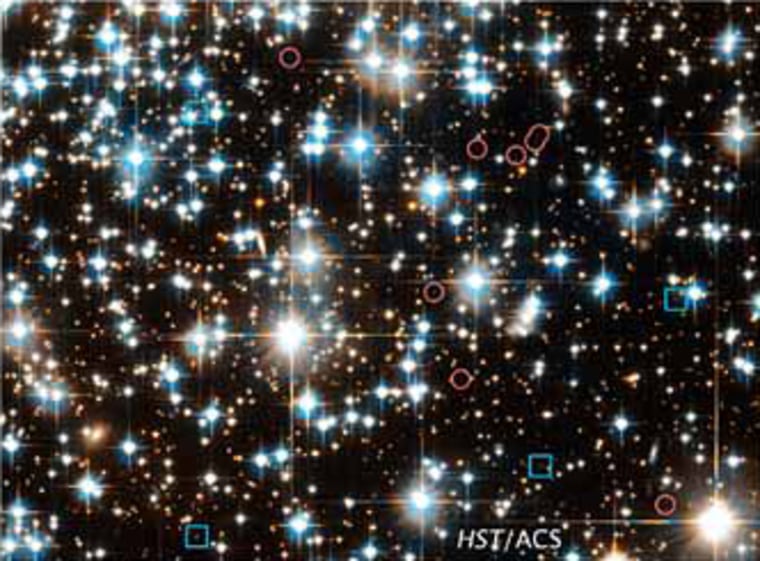As white dwarfs form, they get a "kick" that propels them to speeds of thousands of miles per hour, new evidence from NASA's Hubble Space Telescope shows.
Astronomers used Hubble's Advanced Camera for Surveys to look at the distribution of white dwarfs in the ancient globular cluster NGC 6397, a dense swarm of hundreds of thousands of stars.
Because these stars were extremely massive before they burned out as white dwarfs, and massive stars tend to gather at the cluster's core, astronomers assumed that most of the newly minted white dwarfs would dwell at NGC 6397's center.
Through Hubble's images, however, they discovered young white dwarfs residing at the edge of the globular cluster.
"The distribution of young white dwarfs is the exact opposite of what we expected," said astronomer Harvey Richer of the University of British Columbia in Vancouver. "Our idea is that as aging stars evolve into white dwarfs, they are given a kick of 7,000 to 11,000 miles an hour (3 to 5 kilometers a second), which rockets them to the outer reaches of the cluster."
Richer suggested that white dwarfs propel themselves by ejecting mass, just as rockets do. Before stars become white dwarfs, they swell up into red giants, which lose about half of their mass by shedding it into space. If more of this mass is ejected in one direction, it could propel the emerging white dwarf through space, Richer has proposed.
Observations of some planetary nebulae (the glowing material ejected by red giants) show this directed outflow, with jets projected in opposite directions. If these jets are not perfectly balanced, Richer said, the stronger jet could accelerate the white dwarf in the opposite direction.
The idea that young white dwarfs are born with a kick was suggested 30 years ago to explain why there were so few of them in open star clusters.
